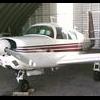Leak in brakes
-
Members Online
- dkkim73
- donkaye
- Lax291
- A64Pilot
- Jblanton
- BartReed
- WAFI
- natdm
- Ragsf15e
- CCowboy
- 52Yankee
- ArtVandelay
- OSUAV8TER
- PeteMc
- redbaron1982
- glbtrottr
- dzeleski
- Patrick Horan
- Shadrach
- oregon87
- Aerodon
- acekng1
- Marc_B
- atpdave
- slowflyin
- Immelman
- wivika2537
- RescueMunchkin
- CAV Ice
- takair
- Dialed In
- Mark M20B
- phrogpilot73
- PT20J
- JoeM
- Scopes
- jlunseth
- StevenF
- aviatoreb
- Rmfriday
- PaulM
- LetTheLeadOut
- Stubby
- 802flyer
- da3b242


Recommended Posts
Join the conversation
You can post now and register later. If you have an account, sign in now to post with your account.